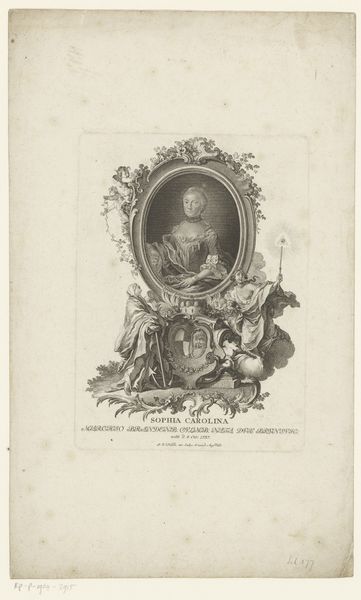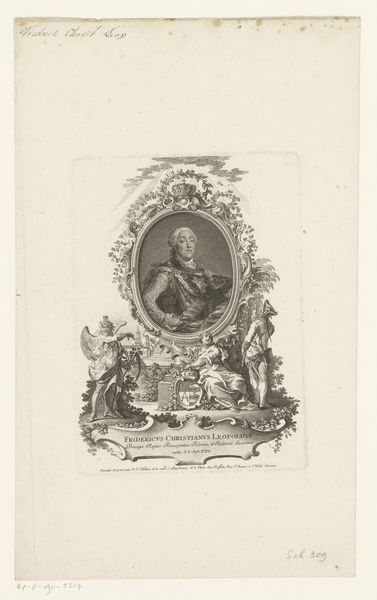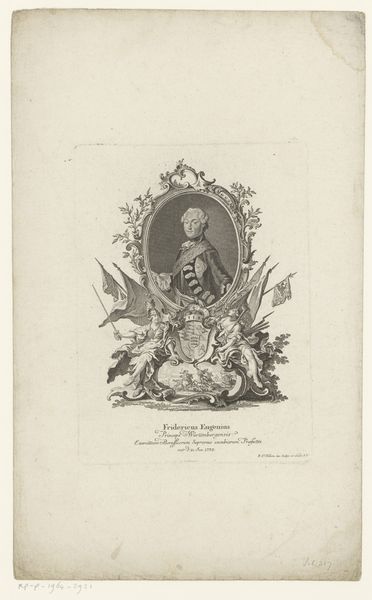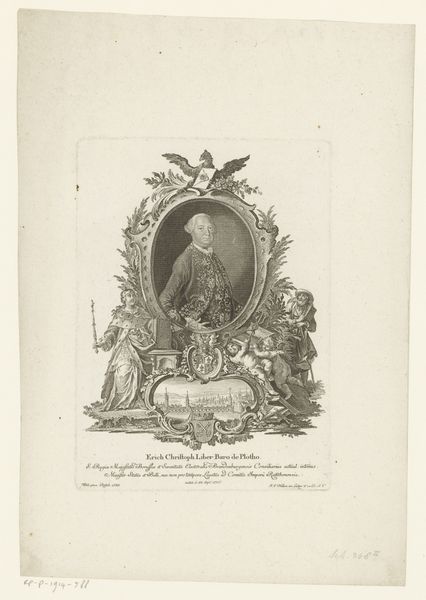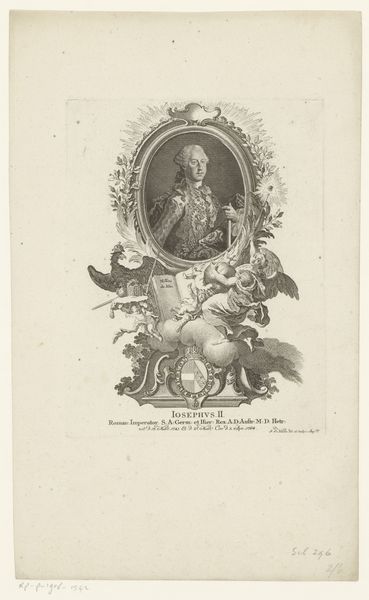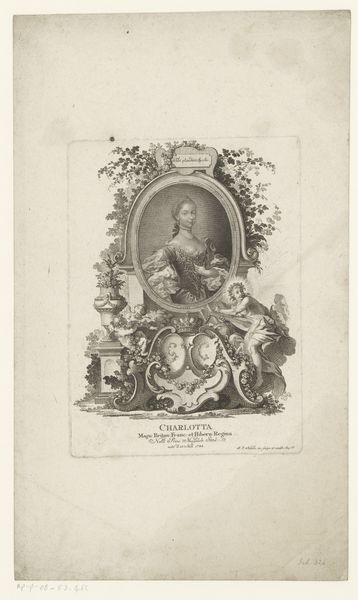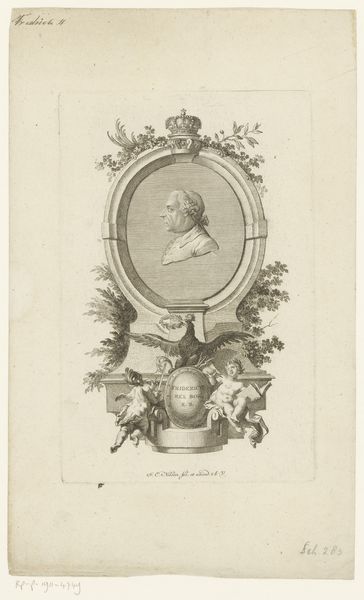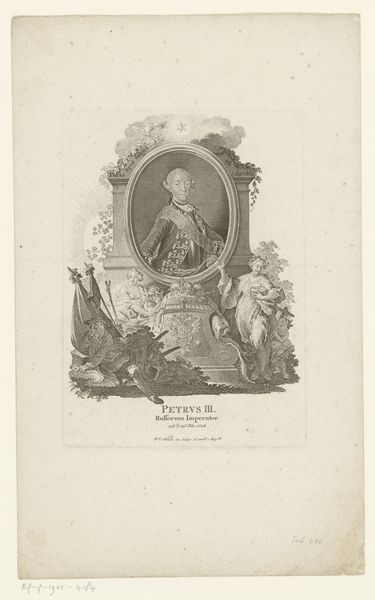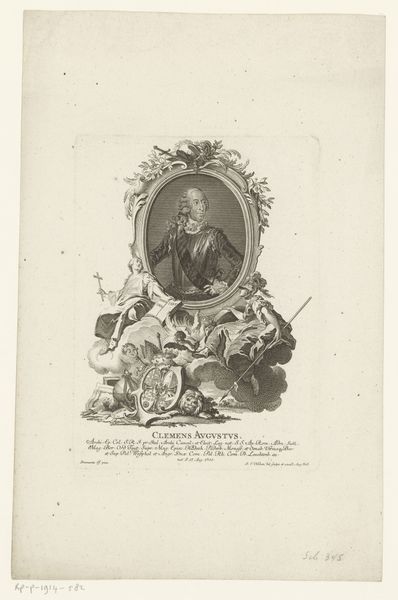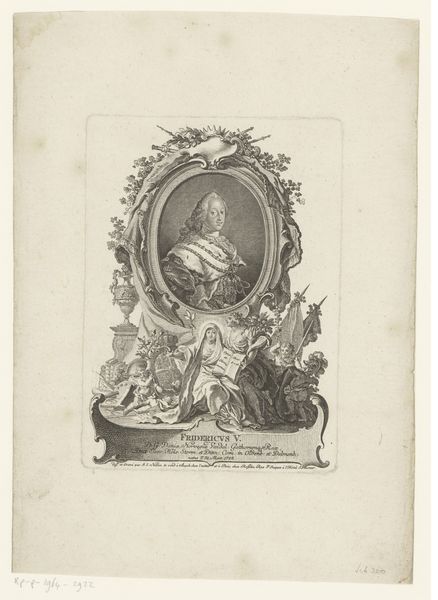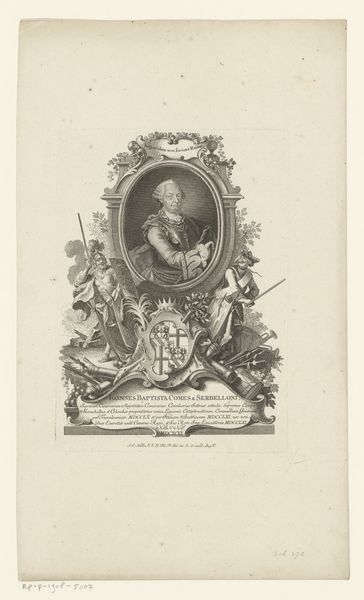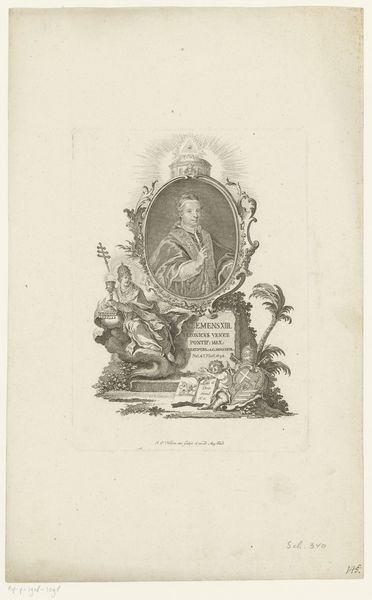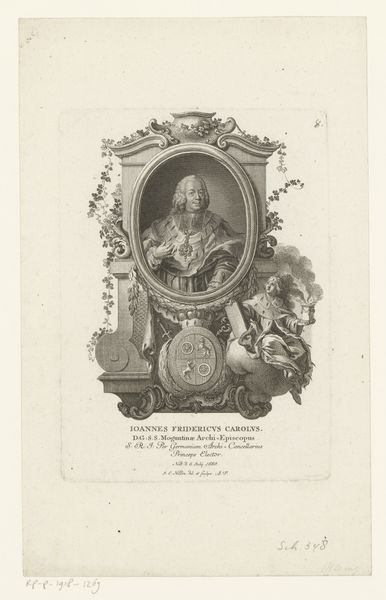
print, metal, paper, engraving
#
portrait
#
baroque
# print
#
metal
#
paper
#
history-painting
#
engraving
Dimensions: height 222 mm, width 160 mm
Copyright: Rijks Museum: Open Domain
Editor: So, this is "Portret van Augustus III, koning van Polen" by Johann Esaias Nilson, made sometime between 1733 and 1788. It's a print, an engraving on metal and paper. It feels very ornate, very much of its time. I'm struck by the level of detail, particularly in the frame around the portrait. What strikes you most about it? Curator: For me, this portrait opens a window onto the public image-making of the 18th century. Think about it – who controlled the production and dissemination of imagery like this? Editor: Presumably, someone close to the king? Or the state? Curator: Exactly. This wasn’t just about capturing a likeness; it was about constructing a particular kind of royal authority. Consider the baroque style, with its emphasis on grandeur. How does the artist use ornamentation to communicate power? Editor: I see it in the elaborate frame, almost like a stage. The figures surrounding the portrait seem to be symbols of something… maybe his virtues or territories? And the architecture on the right—is that significant? Curator: Precisely! The frame acts as a visual proscenium arch, staging the king. Those allegorical figures and the architectural details – likely referencing a key building in his kingdom – root Augustus III in specific power structures and spaces. Think about the role prints like these played in disseminating this constructed image throughout society. Who would have seen this? And in what context? Editor: So, this image wasn’t just art for art's sake, but a carefully crafted piece of political communication? It makes you wonder about the relationship between the artist and the king, or the patrons who commissioned it. Curator: Indeed. It highlights how art serves as a site for negotiating and solidifying power. Analyzing the networks through which such images circulated provides critical insight into the public role of art at the time. Editor: That gives me a lot to think about regarding not just this image, but others like it. Thanks for illuminating the historical and political context!
Comments
No comments
Be the first to comment and join the conversation on the ultimate creative platform.
